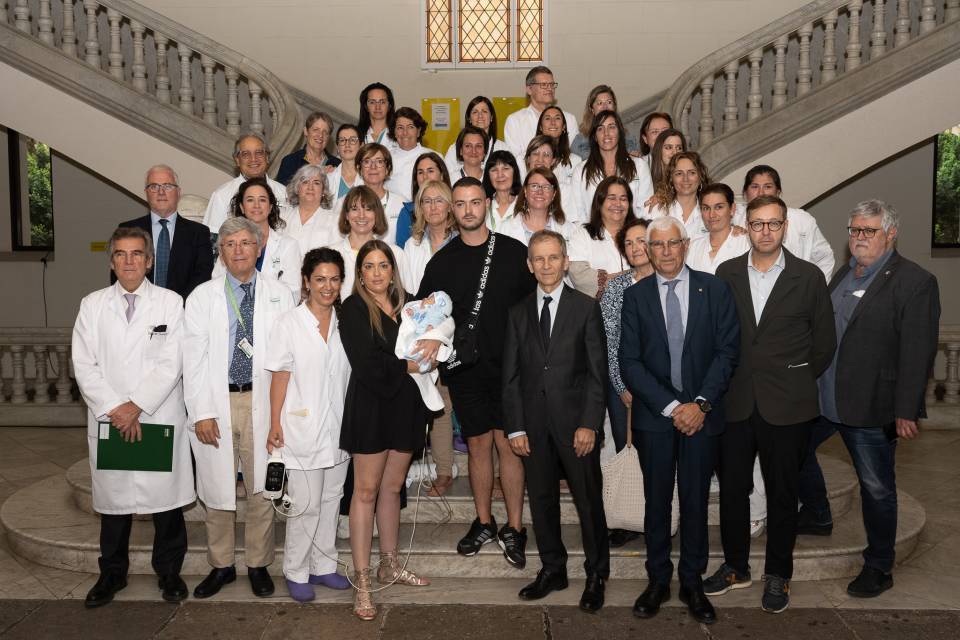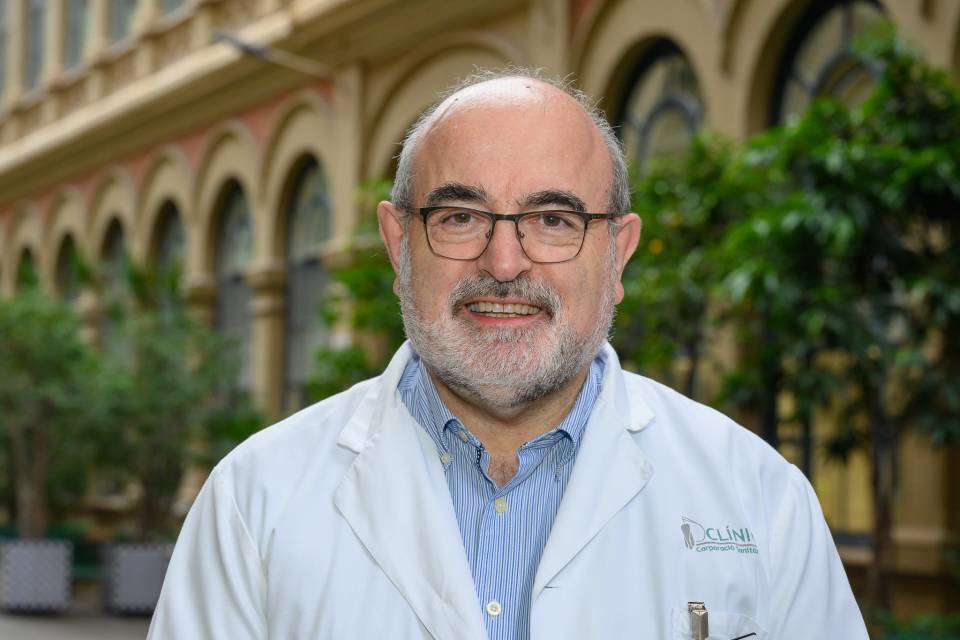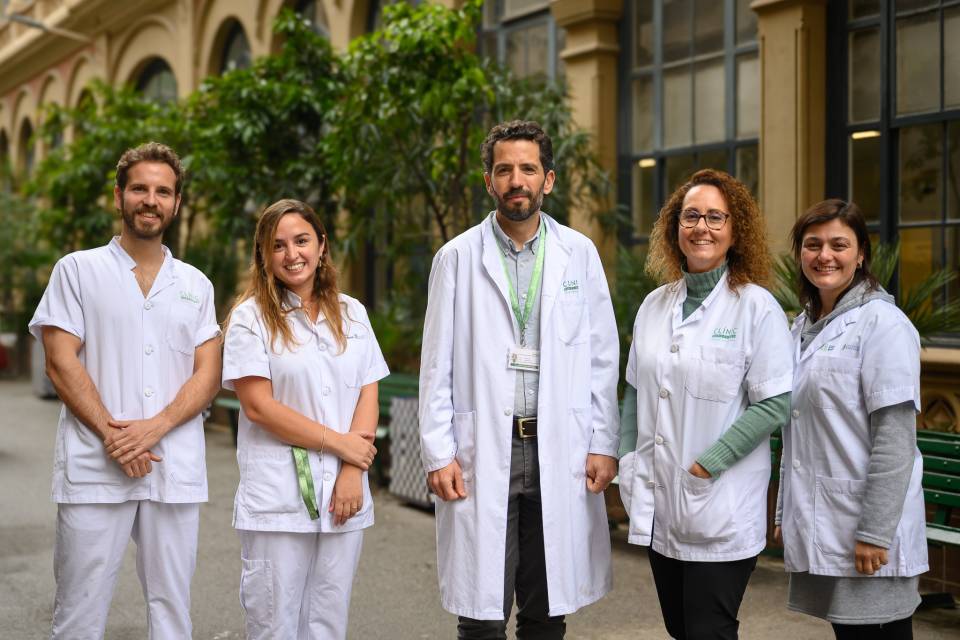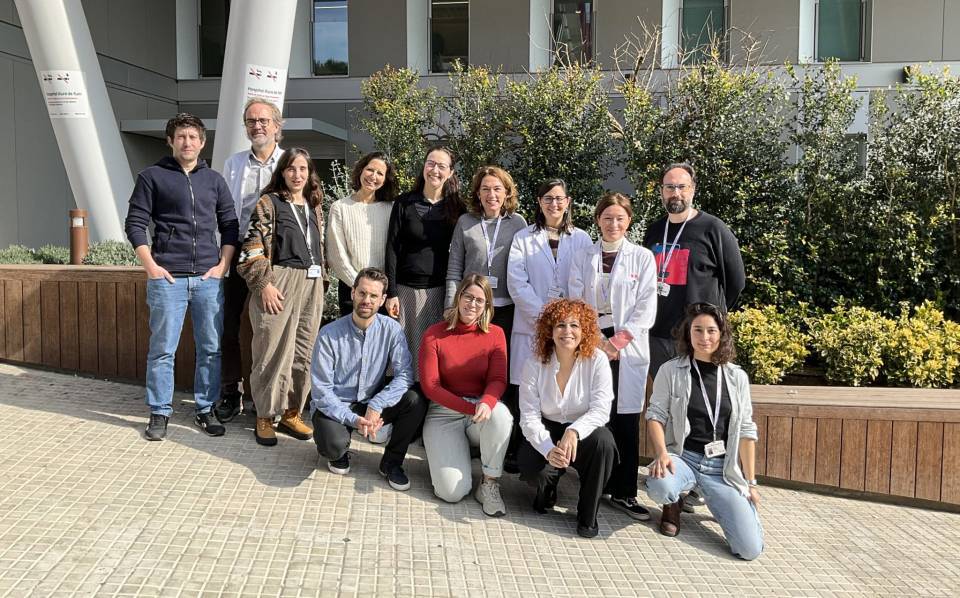The presentation was attended by the minister of health, Manel Balcells, Dr. Josep M. Campistol, director general of the Hospital Clínic, Dr. Francisco Carmona, head of the Gynaecology Service, Dr. Antonio Alcaraz, head of the Urology Service, Dr. Francesc Figueras, head of the Maternal and Fetal Medicine Service, and Tamara Franco, patient and Jesús’ mother.
Tamara Franco is the first woman in Spain to receive a uterus transplant and to give birth after a uterus transplant.
The story of Tamara and Jesús
On 5 October 2020, the first uterus transplant in Spain was performed at the Hospital Clínic. The operation was led by Dr. Francisco Carmona, head of the Gynaecology Service, and Dr. Antonio Alcaraz, head of the Urology and Kidney Transplant Service. This process, which began in 2016, is part of the research project entitled, “Feasibility study for a living donor uterus transplant procedure with the uterine graft being obtained through robotic surgery”, aimed at validating the feasibility of this surgery. Tamara Franco, 34 years old, has Mayer-Rokitansky-Küster-Hauser (MRKH) syndrome, a congenital disorder of the female reproductive system that affects 1 in 5,000 women worldwide. These women are born without a uterus or fallopian tubes (so, they cannot get pregnant). They have ovaries and sexual desire but do not have a menstrual cycle.
Tamara explains that since she was very young she wanted to be a mother and it was “her great dream”. When she was 15, she discovered that she could not be a mother and this "was a terrible blow”. “I knew that the Hospital Clínic was preparing to perform a uterus transplant and I tried to contact them”. Tamara sent an e-mail to Dr. Carmona and, the very next day she received the first reply. This was the start of a whole series of tests for her and her sister (who ended up donating her uterus). Finally, on 5 October 2020 the transplant was carried out. The surgery lasted almost 20 hours and was a success.
Two months after the surgery, the patient had her first period and her recovery was normal. Like anyone with a transplanted organ, she was treated with a course of immunosuppressant drugs. However, it was necessary to wait six months after the first period before carrying out the first transfer of embryos (which had been collected previously). At the same time, the first vaccines against COVID-19 were administered and it was decided to prioritize the vaccination, since the patient was "at risk" because she was taking immunosuppressants. After the vaccination, Tamara got pregnant but miscarried at 8 weeks' gestation (a situation common in patients who have undergone fertility treatment). After a few months, when the patient had recovered, she caught COVID-19 (a mild case) and had to wait a several months more before the second attempt with new embryos. Finally, it was possible to carry out another embryo transfer and Tamara got pregnant with Jesús.
Tamara’s pregnancy was monitored by a multidisciplinary gynaecology and maternal and fetal medicine team. Tamara had a complication involving endothelial dysfunction. Endothelial cells form a single cell layer that separates the tissues from the bloodstream. According to Dr. Figueras, head of the Maternal and Fetal Medicine Service, one of the main functions of the endothelium is to regulate blood flow and tissue perfusion through changes in vascular diameter and tone. This dysfunction during pregnancy can give rise to intrauterine growth restriction and an increase in arterial pressure (known as pre-eclampsia). After this condition was diagnosed, and in order to ensure maximum safety for the patient and the baby, it was decided to programme a conventional caesarean at 30 weeks' gestation. The caesarean was performed without any complications and the baby, Jesús, was born weighing 1,125 grams and with the lung maturation and neuroprotection required by these babies. He was admitted to the Neonatal ICU and continued to develop without any significant complications attributable to prematurity.
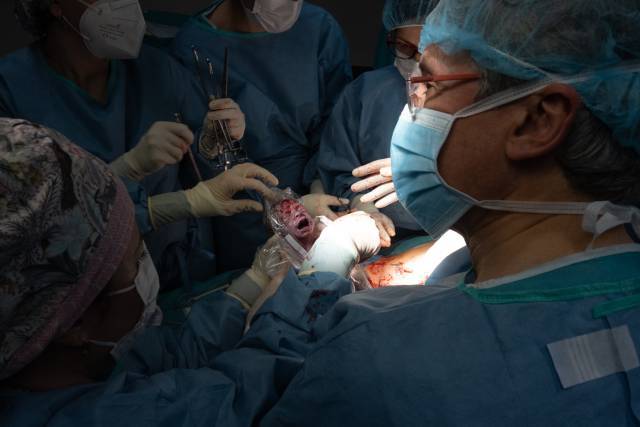
The Catalan Minister of Health, Manel Balcells, said that the case of this baby “*is a small miracle of science*”, and highlighted the quality of the Catalan Health System: *”The Hospital Clínic is at the forefront of hospitals in Catalonia, and today's case opens up new paths in transplants for children, and in technologies that advance and improve and, if they lead to new lives, it is extraordinary".
Balcells ended his speech congratulating the multidisciplinary team at the Hospital Clínic who made this pioneering case possible: *”Challenges encourage us to move forward. Congratulations for opening up the frontiers, for showing us the future, for setting challenges, for positioning us as leaders, not only in Spain but also in Europe. Thank you for making us so proud of this public health system in Catalonia, which also serves the whole of Spain.
According to Dr. Josep Maria Campistol, director general of the Hospital Clínic Barcelona, “Today is a day of celebration that highlights the importance of our health system and our hospital, which strives to be pioneering and innovative and fosters the professionals’ vision and ability to take on new challenges. The birth of Jesús was possible thanks to an interdisciplinary team made up of over 100 people, who were involved both in the transplantation and in the monitoring of the pregnancy and birth. And it was also thanks to Tamara’s determination and the trust she placed in our hospital and our team”.
Dr. Francisco Carmona explains that, “throughout this entire process I have felt great responsibility, a great deal of happiness, great anxiety, and great excitement”. “It is a journey that has lasted many years, involving a large number of professionals, and it has been a source of pride. Once again, it has put us in the first division of world health. Only a dozen or so hospitals in the world can carry out this type of surgery”, he concludes.
Dr. Francisco Carmona, head of the Gynaecology Service explains how, on the day of the surgery–10 March–he was in charge of taking Jesús and carrying him to his mother. "It was a moment I shall never forget", he says.
Dr. Carmona states that this has been the most important project of his professional life. “On a personal level, on a team level and on an institutional level, it has allowed us to enter the global first division and will permit us to work with a significant forward-looking approach”. “Since we were able to carry out this project successfully, we will be able to transfer this knowledge to lots more projects in order to improve the quality of life of many patients in terms of surgery, diagnostic imaging, etc. Just like when man landed on the Moon, Dr. Carmona says that this milestone "is one small step for man (in this case for this woman), but a giant leap for mankind". “This type of project represents the start of many medical advances in the coming years, and we have opened new doors to innovation and knowledge", he adds.
According to Dr. Francesc Figueras, "Tamara is a woman who was very clear about things. She showed us that we need to work for the things we want and to have clear objectives. I am proud to have taken part in this project. I am very happy for the whole team and for the hospital. It is the result of an extraordinary collaborative effort”.
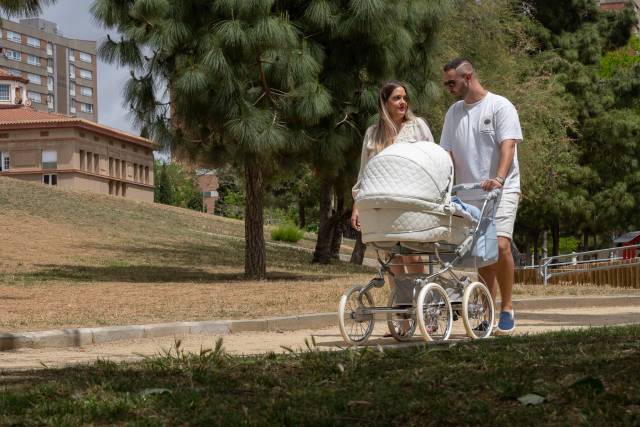
Now, all that Tamara, her husband and Jesús are thinking about is going home and starting a new life.

